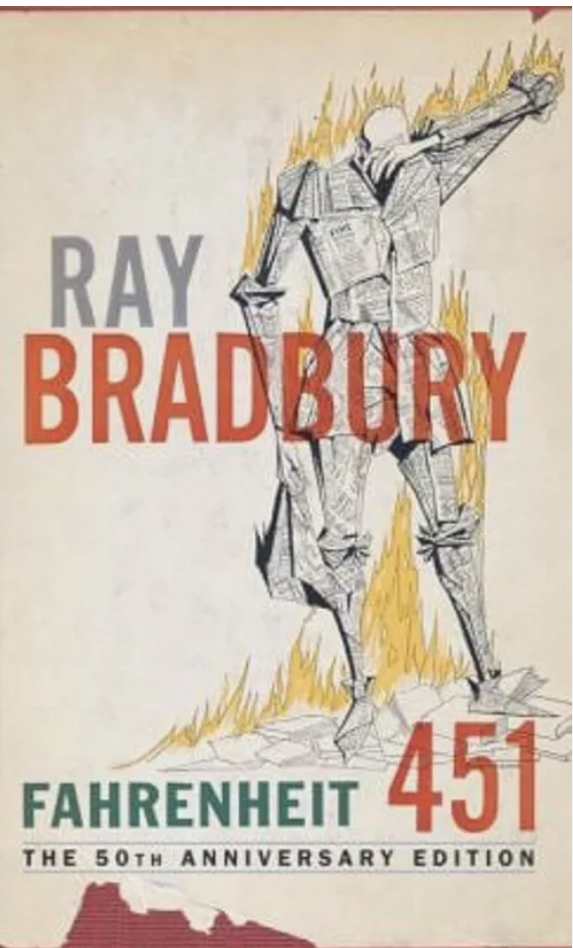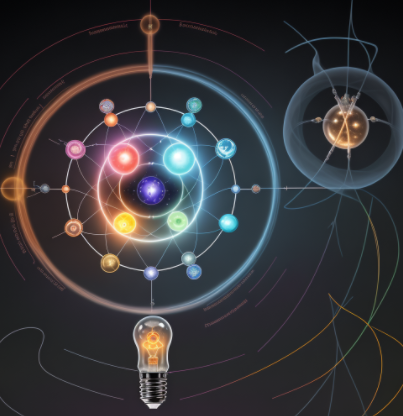The Burning Truth: Understanding “Fahrenheit 451” by Ray Bradbury
Introduction
In a world increasingly dominated by screens and digital distractions, Ray Bradbury’s prophetic novel “Fahrenheit 451” resonates more powerfully than ever. What would a society look like if books were banned and firefighters started fires instead of extinguishing them? This dystopian masterpiece, published in 1953, holds up a mirror to our modern relationship with technology, knowledge, and human connection.
Bradbury’s cautionary tale explores themes of censorship, technological dependency, and the preservation of human knowledge through the story of Guy Montag, a firefighter who questions his role in burning books. This analysis will delve into the novel’s key themes, symbolic elements, and enduring relevance to contemporary society.
The Death of Literature and Knowledge
The Symbolic Nature of Book Burning
The act of burning books represents more than mere censorship; it symbolizes the deliberate destruction of human thought and intellectual freedom. The temperature 451°F—the temperature at which book paper burns—becomes a powerful metaphor for the precise point at which civilization begins to self-destruct.
Bradbury masterfully portrays how this society didn’t arrive at book burning through government decree alone, but through gradual public disinterest in reading and intellectual discourse. The people themselves chose entertainment over enlightenment, preferring the mindless pleasure of their “parlor walls” to the challenging engagement with literature.
The Preservation of Knowledge
The novel introduces the concept of “book people,” individuals who memorize entire books to preserve them for future generations. This resistance movement represents humanity’s resilient spirit and the eternal value of literature. Each person becomes a living library, demonstrating how knowledge can survive even the most oppressive circumstances.
This preservation method highlights the distinction between merely possessing information and truly understanding it, as these individuals embody the works they’ve memorized rather than simply storing them.
Technology and Human Connection
The Walls That Divide
The parlor walls—interactive television screens that dominate people’s homes—serve as a powerful prediction of modern social media and entertainment technology. These walls create an illusion of connection while actually isolating people from genuine human interaction.
Bradbury’s description of Mildred’s addiction to her “family” on the parlor walls eerily foreshadows modern concerns about screen addiction and virtual relationships. The technology designed to connect people instead creates emotional and intellectual barriers between them.
The Mechanical Hound
The mechanical hound represents the cold, unfeeling nature of technology when divorced from human values. This robotic creature, programmed to hunt and kill, symbolizes how technology can be perverted from its original purpose to serve oppressive ends.
The hound’s relentless pursuit of Montag parallels modern surveillance technology and raises questions about privacy, autonomy, and the role of artificial intelligence in law enforcement.
Rebirth and Renewal
The Phoenix Symbolism
The novel’s conclusion draws on the symbol of the phoenix, representing the cycle of destruction and renewal. Just as the mythical bird rises from its own ashes, Bradbury suggests that human civilization might need to be destroyed before it can be reborn in a more enlightened form.
The survivors walking through the ashes of the destroyed city carry within them the seeds of cultural renewal, preserved in their memorized books and their commitment to rebuilding a more thoughtful society.
The Role of Individual Awakening
Montag’s personal transformation from book-burner to book-preserver represents the potential for individual awakening and change. His journey suggests that even in the most oppressive circumstances, individual consciousness can break free from societal conditioning.
Resources for Educators and Students
To deepen understanding of “Fahrenheit 451” and its themes, educators and students may find value in exploring contemporary parallels through structured activities and discussions. The novel provides an excellent springboard for discussions about:
“Fahrenheit 451” by Ray Bradbury – Comprehensive Lesson Plan Package
Conclusion
“Fahrenheit 451” remains a powerful warning about the dangers of intellectual conformity and the importance of preserving human knowledge and connection. Its themes of censorship, technological dependency, and the power of literature continue to resonate in our increasingly digital age.
As we navigate our own relationship with technology and information, Bradbury’s masterpiece reminds us that the preservation of human knowledge and genuine connection requires active participation and conscious resistance against the forces of intellectual oppression. The novel challenges readers to consider their role in maintaining a society that values knowledge, critical thinking, and genuine human connection over passive entertainment and willful ignorance.






